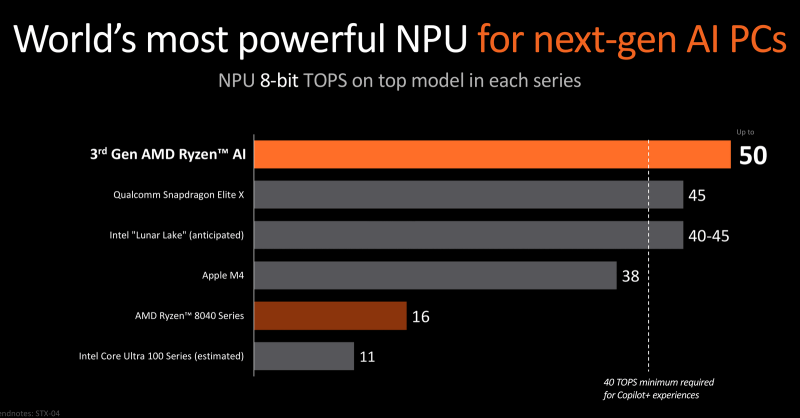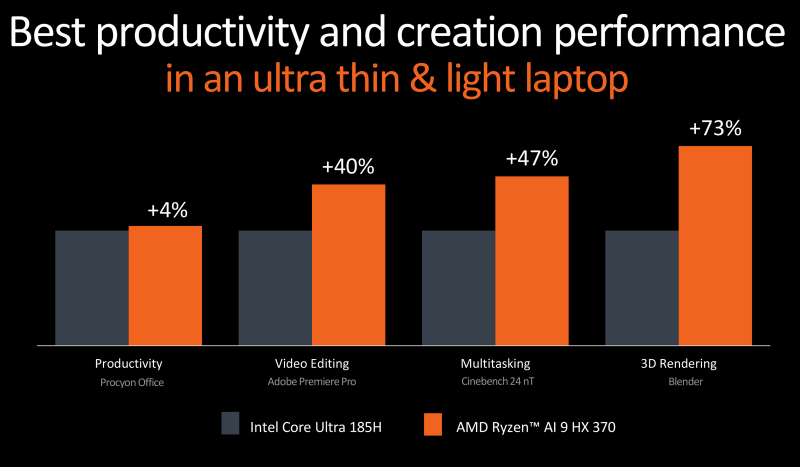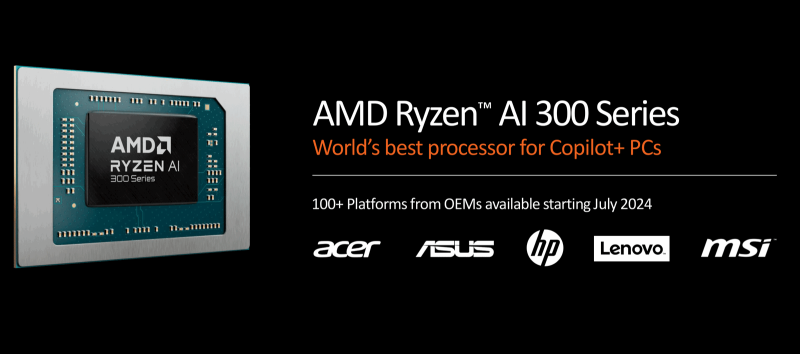AMD has introduced its Strix Point processors, dubbing them Ryzen AI 300 to indicate their artificial intelligence (AI) capabilities. A significant player in the PC market, AMD’s latest processors emphasise the role of mobile computing and AI processors’ expansion in this segment. The processors feature the modern Zen 5 architecture and RDNA 3.5 graphics.
During Computex 2024, AMD announced that the Ryzen AI 300 processors would excel in tasks requiring logical conclusions. Furthermore, the Strix Point family’s novelty is demonstrated through the use of Zen 5 processing cores and integrated graphics transitioning to RDNA 3.5. Also, a neural co-processor with XDNA2 architecture executing 50 trillion operations per second boosts AI system performance. AMD estimates the XDNA2 architecture offers a 5 to 60% advantage over the Qualcomm Snapdragon X Elite.

Despite considerable advancements, the Strix Point family’s lithography remains stationary, with the TSMC company manufacturing these chips using 4-nm technology, like its predecessors. The Ryzen AI 9 HX 370 and Ryzen AI 9 365 serve as the family’s debut models, featuring 12 and 10 Zen 5 cores, respectively. The first processor comes with a maximum frequency of 5.1 GHz, 12 MB level-two cache, and 24 MB level-three cache. In contrast, the Ryzen AI 9 365 includes a reduced 10 MB second-level cache and clocks up to 5.0 GHz. Both processors have base frequencies of 2.0 GHz and a variable TDP that ranges from 15 to 54 watts.
While the Radeon 890M graphics subsystem with 16 execution units is outfitted in the senior processor, the lesser model acquires a Radeon 880M with 12 execution units. AMD claims these graphics perform comparably to gaming consoles.

The Ryzen AI 9 HX 370 combines four Zen 5 cores with eight Zen 5c cores, designed for high performance and energy efficiency, respectively. On the other hand, the Ryzen AI 9 365 model pairs four Zen 5 cores with six Zen 5c cores. Furthermore, AMD ensures that both processors can handle a number of virtual threads equivalent to twice the total number of cores. Wherewith, the Ryzen AI 9 HX 370 can process 24 threads simultaneously, whereas the Ryzen AI 9 365 can handle 20. Compared to the Zen 4, the Zen 5 architecture is expected to yield a 16% increase in specific performance.
AMD claims the Ryzen AI 9 HX 370 outperforms the Intel Core Ultra 185H from the Meteor Lake family by 4 to 73% in performance, averaging a 36% lead in games.

Laptops featuring the new AMD processors with the Zen 5 architecture will hit the market in July. It’s anticipated that Zcer, Asus, HP Inc, Lenovo, and MSI will be among the first to offer these models. Over 100 laptop models incorporating these processors are expected to be launched this year.






